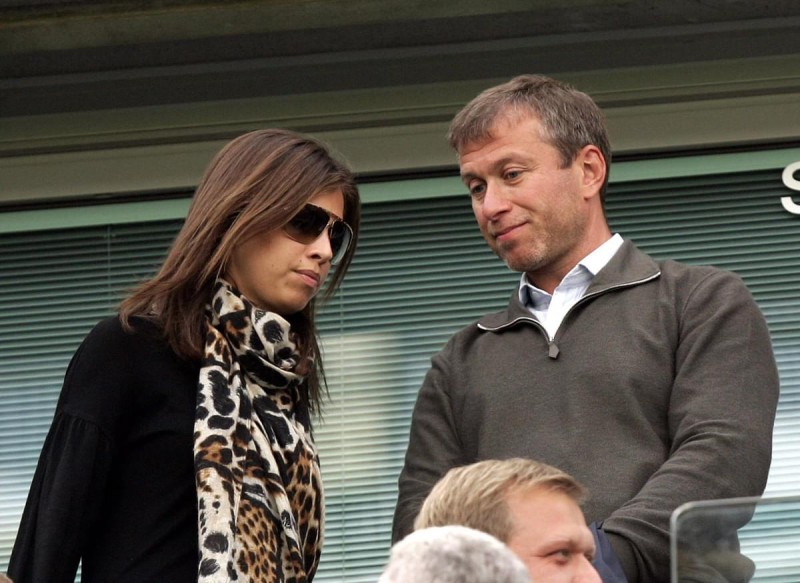Experts say it’s one of the most impressive private art collections in the world. Made up of over 300 pieces — including works by Picasso, Monet, and Degas — it was valued in 2018 at nearly $1 billion.
This striking assortment was acquired over the years by Russian billionaire Roman Abramovich and his ex-wife Dasha Zhukova, corporate documents newly leaked from Cyprus reveal.
And despite the sanctions leveled against wealthy Russian oligarchs in the wake of last year’s brutal invasion of Ukraine, the former married couple still enjoys access to these invaluable works.
In February 2022, just days after the U.K. government warned oligarchs close to the Kremlin that the anticipated invasion could bring sanctions packages, the Cypriot trust that held the collection was restructured, reducing Abramovich’s share below the crucial threshold of 50 percent.
The details are revealed in files found by the Guardian, OCCRP, and other media partners among data leaked from a Cypriot corporate service provider and released by the whistleblower site Distributed Denial of Secrets.
Abramovich and Zhukova’s penchant for art is nothing new. The couple cultivated reputations as art lovers over their nine years of marriage, co-founding a major contemporary art museum in Moscow. Zhukova is a trustee of New York’s Metropolitan Museum of Art. And when Abramovich paid $33.6 million for Lucien Freud’s “Benefits Supervisor Sleeping,” considered one of the finest pieces of modern art, it was a record price for a work by a living artist.
But the scale of their private collection, newly revealed in the Cypriot files, far surpasses what was previously known. Among the works are Picasso’s “Le Jeune Toreador,” and Monet’s “La Plage à Trouville,” and sculptures by Henry Moore, Anthony Gormley, and Alberto Giacometti.
A database of art owned by Russian oligarchs compiled by the Ukrainian government and targeted for seizure includes only four works related to Abramovich — a far cry from the collection now revealed.
“You could fill a museum with it, this is a stupendous collection,” Andrew Renton, Professor of Curating at Goldsmith, University of London, told the Guardian. “It’s not the vulgar collection of a nouveau riche, it shows very good taste. If you have enough money, you can buy a piece of history.”
Art expert and consultant Claudio Metzger agreed.
“These are prestigious works,” he told OCCRP’s media partner L’Espresso. “[These] are iconic pieces, all museum pieces. I am surprised to see all these works together.”
OCCRP and the Guardian previously revealed details of how MeritServus HC Limited, the corporate services provider from which the files were leaked, appeared to have continued to work for Abramovich even after the invasion of Ukraine. The company was subsequently sanctioned by the U.K. government.
Abramovich and MeritServus did not respond to emailed questions. Zhukova declined to provide a comment.
A Difference of One Percent
The works seen in the leak were technically owned by Seline-Invest, a British Virgin Islands company that was redomiciled to Jersey in June 2017 and ultimately held under a Cyprus-based trust called Ermis Trust Settlement.
Seline acquired the works from Abramovich companies around the time of his divorce from Zhukova, in 2017 and 2018. The price tags on itemized sales documents add up to $963 million.
In January 2021, Zhukova was made an “additional” beneficiary of Ermis, which had originally been set up for Abramovich alone in 2010. The now-divorced couple’s shares were set at 50-50.
But in February 2022, just ahead of the Russian invasion, the trust was restructured to increase Zhukova’s share to 51 percent and reduce Abramovich’s to 49 percent.
The change of stake may have been designed to insulate the art from incoming sanctions packages, since these often apply only to assets that are at least 50 percent owned by blacklisted individuals.
Abramovich was indeed sanctioned by the U.K. and EU in the first half of March 2022 for his alleged association with Putin. While some of his prominent assets were frozen, and he was forced to sell the Chelsea FC soccer team, the artwork remained untouched.
“The 50 percent rule works slightly differently in [various] jurisdictions, but under any version of the rules, it would have been attractive to reduce the interest of a trust beneficiary who was likely to be sanctioned,” said Tom Keatinge, director of the Centre for Financial Crime and Security Studies at the U.K.-based think tank Royal United Services Institute.
“A lot of this was happening in the run-up to the war, in the hope of keeping assets out of reach of sanctions authorities,” Keatinge said.
Zhukova, a U.S. citizen, has not been sanctioned, and has spoken out against Russia’s attack on Ukraine. There is no suggestion she was aware of or involved in the change in beneficial interest in Ermis, since administrators of the trust had the power to make such alterations without her knowledge.
Keatinge said that oligarchs close to Putin were likely to have had “a strategy for dealing with heightened [sanctions] pressure” even before they were sanctioned. “This is [an] example of…an oligarch enacting a fairly simple strategy to safeguard their wealth,” he said.
‘The Public Are Deprived’
The leaked files show how Abramovich and Zhukova built their collection. In late 2010, Abramovich hired Sandford Heller, an art advisor to the world’s wealthiest collectors, on a $500,000-a-year contract. Over the next six years, Heller helped Abramovich and Zhukova put the collection together. (Heller did not respond to a request for comment).
The location of the works is unknown. The documents show that some of them were kept in storage in London over the years. Unlike some other famous art investors, Abramovich and Zhukova have not put their full collection on display for the public. Some pieces have occasionally been loaned to exhibitions, but usually anonymously, their labels reading only “private collection.”
A 2021 profile of Zhukova on an arts website described how her residences are full of artworks, saying that “she lives in the company of everything from a figurative painting by Mark Tansey to an abstract one by Piet Mondrian.”
But pieces from the collection have not been seen in public since the sanctions against Abramovich, likely due to complications caused by his sanctioning.
“It is regrettable that the trust that holds these works seems unable to lend them because of sanctions,” art market expert Georgina Adam told the Guardian.
“These sanctions were imposed for good reason. Now, the consequence of Mr. Abramovich’s investment in art is that the public are deprived of the opportunity to enjoy some of the greatest modern and contemporary works.”
The leaked records show that, before being sanctioned, Abramovich had certain pieces transferred to his European mansions or to his $1.3 billion yacht. According to loan agreements between Seline and companies associated with Abramovich’s properties, the pieces were moved out of storage for private display.
“It’s a tragedy that this collection is going to be invisible for a very long time unless some kind of solution can be reached,” said Renton.
“There are too few of these types of paintings for that to happen.”




